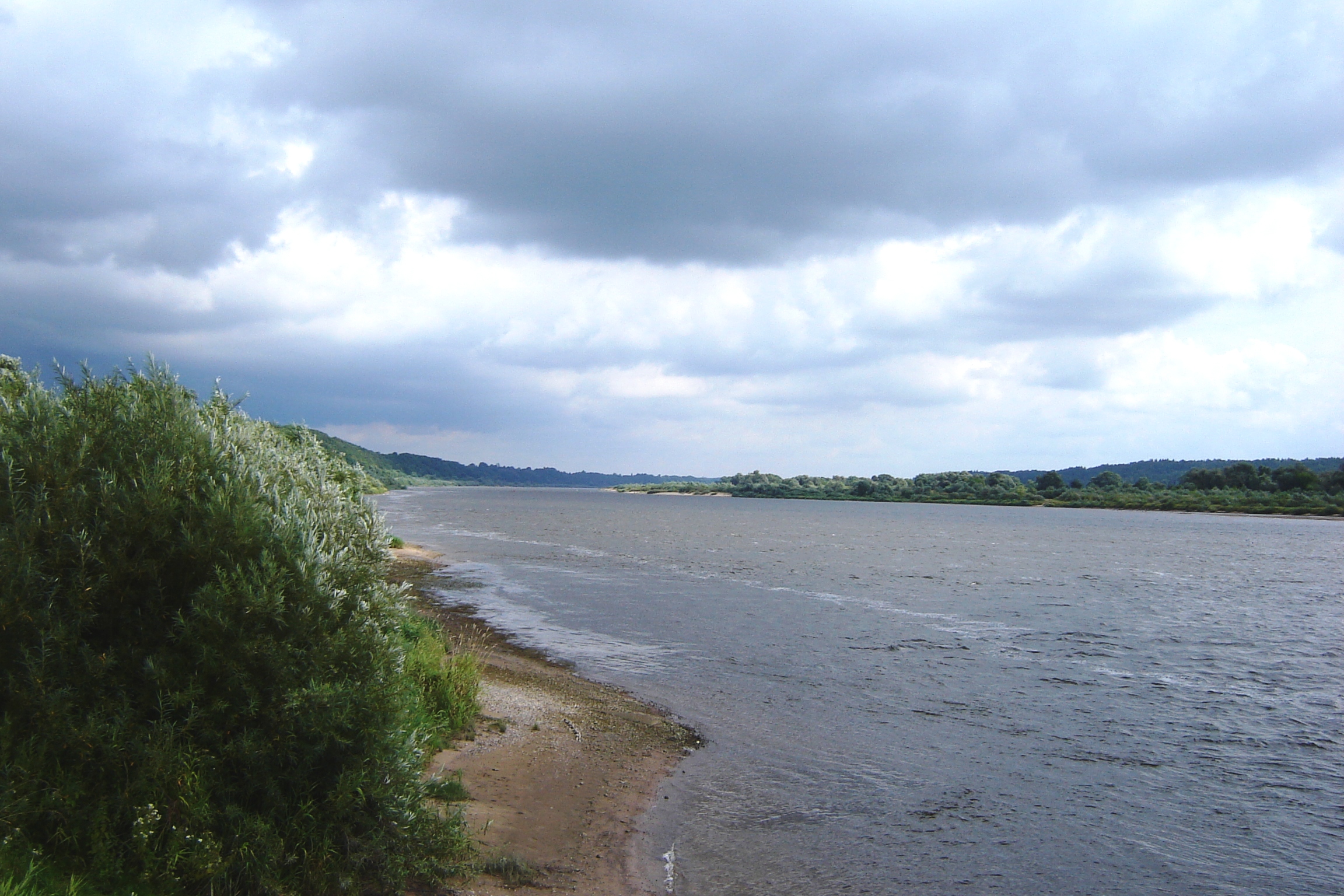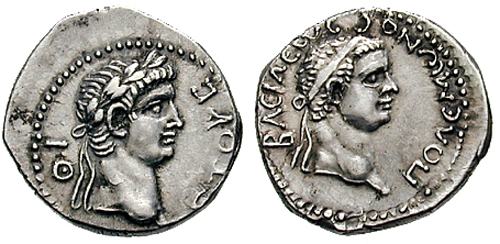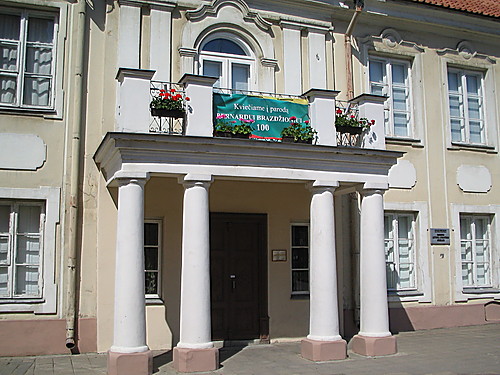|
Palemonids
The Palemonids were a legendary dynasty of Grand Dukes of the Grand Duchy of Lithuania. The legend was born in the 15th or 16th century as proof that Lithuanians and the Grand Duchy are of Ancient Rome, Roman origins. Already Jan Długosz (1415–1480) wrote that the Lithuanians were of Roman origin, but did not provide any proof. The legend is first recorded in the second edition of the Lithuanian Chronicle produced in the 1530s. At the time the Grand Duchy of Lithuania was quarrelling with the Kingdom of Poland (1385–1569), Kingdom of Poland, rejecting the claims that Poland had civilized the pagan and barbaric Lithuania. The Lithuanian nobility felt a need for the ruling dynasty to show upstanding origins, as the only available chronicles at the time were written by the Teutonic Knights, a long-standing enemy, and depicted Gediminas, ancestor of the Gediminids dynasty, as a hostler of Vytenis. In this new Lithuanian chronicle, Palemon (could be Polemon II of Pontus), a relati ... [...More Info...] [...Related Items...] OR: [Wikipedia] [Google] [Baidu] |
Gediminids
The House of Gediminid or simply the Gediminids ( lt, Gediminaičiai, sgs, Gedėmėnātē, be, Гедзімінавічы, pl, Giedyminowicze, uk, Гедиміновичі;) were a dynasty of monarchs in the Grand Duchy of Lithuania that reigned from the 14th to the 16th century. A cadet branch of this family, known as the Jagiellonian dynasty, reigned also in the Kingdom of Poland, Kingdom of Hungary and Kingdom of Bohemia. Several other branches ranked among the leading aristocratic dynasties of Russia and Poland into recent times. Their monarchical title in Lithuanian primarily was, by some folkloristic data, ''kunigų kunigas'' ("Duke of Dukes"), and later on, ''didysis kunigas'' ("Great/High Duke") or, in a simple manner, ''karalius or kunigaikštis''. In the 18th century, the latter form was changed into tautological ''didysis kunigaikštis'', which nevertheless would be translated as "Grand Duke" (for its etymology, see Grand Prince). Origin The origin of Gediminas h ... [...More Info...] [...Related Items...] OR: [Wikipedia] [Google] [Baidu] |
Jurbarkas
Jurbarkas (; Samogitian dialect, Samogitian: ''Jorbarks'', known also by several #Etymology, alternative names) is a List of cities in Lithuania, city in Tauragė County, in Samogitia, Lithuania. Jurbarkas is located in the historic land of Karšuva. It is on the right-hand shore of the Neman (river), Nemunas at its confluence (geography), confluence with the tributaries Mituva and Imsrė. The town became an important road junction after a bridge was built over the Nemunas in 1978. Etymology The name Jurbarkas is derived from the Ordensburg, Ordensburg castle, ''Georgenburg'', built in the 13th century. Jurbarkas has also been known by many derivate spellings in various languages throughout its history. The most notable non-Lithuanian names for the city include: in Samogitian dialect, Samogitian ''Jorbarks'', in German language, German ''Georgenburg'', ''Jurgenburg'', and ''Eurburg'', in Polish language, Polish, ''Jurbork'', and in Yiddish language, Yiddish יורבורג ('' ... [...More Info...] [...Related Items...] OR: [Wikipedia] [Google] [Baidu] |
Lithuanian Chronicle
The Lithuanian Chronicles ( lt, Lietuvos metraščiai, also called Belarusian-Lithuanian Chronicles) are three redactions of chronicles compiled in the Grand Duchy of Lithuania. All redactions were written in the Ruthenian language and served the needs of Lithuanian patriotism. The first edition, compiled in the 1420s, glorified Vytautas the Great and supported his side in power struggles. The second redaction, prepared in the first half of the 16th century, started the myth of Lithuanian Roman origin: it gave a fanciful genealogy of Palemon, a noble from the Roman Empire who founded the Grand Duchy. This noble origin of Lithuanians was important in cultural rivalry with the Kingdom of Poland. The third redaction, known as the Bychowiec Chronicle, elaborated even further on the legend, but also provided some useful information about the second half of the 15th century. The three redactions, the first known historical accounts produced within the Grand Duchy, gave rise to the histor ... [...More Info...] [...Related Items...] OR: [Wikipedia] [Google] [Baidu] |
Polemon II Of Pontus
Marcus Antonius Polemon Pythodoros, also known as Polemon II of Pontus and Polemon of Cilicia ( el, Μάρκος Ἀντώνιος Πολέμων Πυθόδωρος; 12 BC/11 BC–74), was a prince of the Bosporan, Pontus, Cilicia, and Cappadocia. He served as a Roman Client King of Pontus, Colchis, and Cilicia. He is held to be the progenitor of the Lithuanian nobility (via Palemonids) in its origin theory. Family The Pontic royal family was of mixed Anatolian, Greek, and Roman origin. His paternal grandmother is unknown; however his paternal grandmother could have been named Tryphaena, while his paternal grandfather was Zenon, a prominent orator, aristocrat, and ally to Roman Triumvir Mark Antony. His maternal grandparents were Pythodoros of Tralles, a wealthy Greek and friend of Pompey, and Antonia. Polemon II was the namesake of his parents and his maternal grandparents. Polemon II was the second son and middle child of the Pontic Rulers Polemon Pythodoros and Pythodorida ... [...More Info...] [...Related Items...] OR: [Wikipedia] [Google] [Baidu] |
Bychowiec Chronicle
The Bychowiec Chronicle (also spelled ''Bykhovets'', ''Bykovets'' or '' Bychovec'') is an anonymous 16th-century chronicle of the Grand Duchy of Lithuania. Although one of the least reliable sources of the epoch, it is considered the most extensive redaction of the Lithuanian Chronicles. Origin and publication The chronicle was most probably authored between 1519 and 1542, though some parts continued to be added until 1574. Authors of the chronicle are not known. The text highlights achievements of the Goštautai and Olshanski families, particularly to Jonas Goštautas. Therefore, scholars concluded that it was sponsored by a member of these families. Scholars proposed Grand Chancellor Albertas Goštautas, Bishop Paweł Holszański, and Duke Olelkovich. Aleksander Bychowiec, a 19th-century Polish noble and historian, discovered the chronicle in 1830 and it is now known by his name. Teodor Narbutt studied, copied and published it in full in 1846 under the title ''Pomniki do dziejów ... [...More Info...] [...Related Items...] OR: [Wikipedia] [Google] [Baidu] |
Maciej Stryjkowski
Maciej Stryjkowski (also referred to as Strykowski and Strycovius;Nowa encyklopedia powszechna PWN. t. 6, 1997 – ) was a Polish historian, writer and a poet, known as the author of ''Chronicle of Poland, Lithuania, Samogitia and all of Ruthenia'' (1582). The work is generally considered to be the first printed book on the history of the Grand Duchy of Lithuania. Biography Maciej Stryjkowski was born around 1547 in Stryków, a town in the Rawa Voivodeship in the Kingdom of Poland. He graduated from a local school in the town of Brzeziny, after which he joined the Grand Ducal Lithuanian Army. He served in a garrison in Vitebsk under Alexander Guagnini. He was a Pole, but spent most of his life in the Grand Duchy, initially as a soldier. Around 1573, at the age of roughly 25, he retired from active service and became a protégé of Merkelis Giedraitis, the bishop of Samogitia. Eventually, Stryjkowski became a Catholic priest and ended as a provost at the parish of Jurbarkas ne ... [...More Info...] [...Related Items...] OR: [Wikipedia] [Google] [Baidu] |
Lithuanian Nobility
The Lithuanian nobility or szlachta ( Lithuanian: ''bajorija, šlėkta'') was historically a legally privileged hereditary elite class in the Kingdom of Lithuania and Grand Duchy of Lithuania (including during period of foreign rule 1795–1918) consisting of Lithuanians from Lithuania Proper; Samogitians from Duchy of Samogitia; following Lithuania's eastward expansion into what is now Belarus, Ukraine and Russia, many ethnically Ruthenian noble families (''boyars''); and, later on, predominantly Baltic German families from the Duchy of Livonia and Inflanty Voivodeship. It traced its origins via Palemonids to Polemon II of Pontus. Families of the nobility were responsible for military mobilization and enjoyed Golden Liberty; some were rewarded with additional privileges for success on the battlefield. In the Grand Duchy of Lithuania, ducal titles were mostly inherited by descendants of old dynasties while the relatively few hereditary noble titles in the Kingdom of Poland we ... [...More Info...] [...Related Items...] OR: [Wikipedia] [Google] [Baidu] |
Mindaugas
Mindaugas (german: Myndowen, la, Mindowe, orv, Мендог, be, Міндоўг, pl, Mendog, c. 1203–1263) is the first known Grand Duke of Lithuania and the only crowned King of Lithuania. Little is known of his origins, early life, or rise to power; he is mentioned in a 1219 treaty as an elder duke, and in 1236 as the leader of all the Lithuanians. The contemporary and modern sources discussing his ascent mention strategic marriages along with banishment or murder of his rivals. He extended his domain into regions southeast of Lithuania proper during the 1230s and 1240s. In 1250 or 1251, during the course of internal power struggles, he was baptised as a Roman Catholic; this action enabled him to establish an alliance with the Livonian Order, a long-standing antagonist of the Lithuanians. During the summer of 1253 he was crowned King of Lithuania, ruling between 300,000 and 400,000 subjects. While Mindaugas's ten-year reign as king was marked by many state-building acco ... [...More Info...] [...Related Items...] OR: [Wikipedia] [Google] [Baidu] |
Grand Duchy Of Lithuania
The Grand Duchy of Lithuania was a European state that existed from the 13th century to 1795, when the territory was partitioned among the Russian Empire, the Kingdom of Prussia, and the Habsburg Empire of Austria. The state was founded by Lithuanians, who were at the time a polytheistic nation born from several united Baltic tribes from Aukštaitija. The Grand Duchy expanded to include large portions of the former Kievan Rus' and other neighbouring states, including what is now Lithuania, Belarus and parts of Ukraine, Latvia, Poland, Russia and Moldova. At its greatest extent, in the 15th century, it was the largest state in Europe. It was a multi-ethnic and multiconfessional state, with great diversity in languages, religion, and cultural heritage. The consolidation of the Lithuanian lands began in the late 13th century. Mindaugas, the first ruler of the Grand Duchy, was crowned as Catholic King of Lithuania in 1253. The pagan state was targeted in a religious crusade by ... [...More Info...] [...Related Items...] OR: [Wikipedia] [Google] [Baidu] |
Joachim Lelewel
Joachim Lelewel (22 March 1786 – 29 May 1861) was a Polish historian, geographer, bibliographer, polyglot and politician. Life Born in Warsaw to a Polonized German family, Lelewel was educated at the Imperial University of Vilna, where in 1814 he became a lecturer in history, with a brief sojourn at Warsaw, 1818–1821, where he joined the Warsaw Society of Friends of Learning. His lectures on Polish history created great enthusiasm, as shown in some lines addressed to him by Adam Mickiewicz that led to Lelewel's removal by the Russians in 1824. Five years later, Lelewel returned to Warsaw, where he was elected a deputy to the Sejm of Congress Poland. He joined the November 1830 Uprising with more enthusiasm than energy, though Tsar Nicholas I identified him as one of the most dangerous rebels. He is considered the author of the motto: "For our freedom and yours". On the suppression of the rebellion, Lelewel made his way in disguise to Germany and subsequently reached Pari ... [...More Info...] [...Related Items...] OR: [Wikipedia] [Google] [Baidu] |
Dubysa
Dubysa, at 131 km, is the 15th List of rivers of Lithuania, longest river solely in Lithuania. It originates just a few kilometers from Lake Rėkyva near Šiauliai city. At first it flows south, but at Lyduvėnai turns southeast and near Ariogala - southwest. Dubysa is a Samogitian river. The first few kilometres of Dybysa are also known as ''Genupis'' or ''Šventupis''. Dubysa has about 40 tributaries, the largest being Kražantė on the right and Šiaušė, Gryžuva, and Gynėvė on the left. Kražantė (86 km) is almost twice as long as the upper reaches of Dubysa before the confluence (47 km). Even though Kražantė's basin is somewhat smaller, it should be considered the main river. Dubysa is mainly fed by rainfall and melting snow, therefore its water levels change rapidly. The maximum depth is about 4 m. The Dubysa valley is one of the highest and widest in Lithuania. The valley reaches 20–40 m in height and 300–500 m in width. It was formed during the ... [...More Info...] [...Related Items...] OR: [Wikipedia] [Google] [Baidu] |
Maironis
Maironis (born Jonas Mačiulis, ; – 28 June 1932) was a Lithuanian Roman Catholic priest and the greatest and most-known Lithuanian poet, especially of the period of the Lithuanian press ban. He was called the Bard of Lithuanian National Revival (). Maironis was active in public life. However, the Lithuanian literary historian Juozas Brazaitis writes that Maironis was not. In his poetry, he expressed the national aspirations of the Lithuanian National Revival and was highly influential in Lithuanian society and poetry. The Maironian school in Lithuanian literature was named after him. Life Early years Jonas Mačiulis was born in manor, , , in Russian-occupied Lithuania on . Maironis' parents were free peasants who maintained close relations with the polonized Lithuanian nobility. Such a social environment formed the basis of Maironis' personality, leading to his deep religiosity and loyalty to tradition, free from atheistic or liberal influences. Socially, Maironis was u ... [...More Info...] [...Related Items...] OR: [Wikipedia] [Google] [Baidu] |




.jpg)


